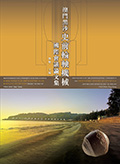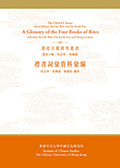Proceedings of the International Conference on Prehistoric Rotary Technology and Related Issues at Hac Sa, Macao, Centre for Chinese Archaeology and Art  These Proceedings were edited by Professor Tang Chung and published by the Civic and Municipal Affairs Bureau, Macau, in 2014. These Proceedings were edited by Professor Tang Chung and published by the Civic and Municipal Affairs Bureau, Macau, in 2014.
The wheel is an important scientific invention in human history, and rotary machinery is one of the core components of mechanical engineering and technology. Since ancient times, China has made remarkable achievements in the use of rotary machinery. In recent years, new archaeological finds have revealed much about its origin and development. There is evidence that rotary machinery had a significant influence on jade, pottery and lacquerware production in the early Neolithic period, and on metallurgy in the Bronze Age. In June 2013, we held the International Conference on Prehistoric Rotary Technology and Related Issues at Hac Sa, Macao, bringing together expertise in archaeology and the history of science and technology from around the world. Our participating scholars discussed the emergence of prehistoric rotary machinery in China and its relationship to the origin of Chinese civilisation. The 22 essays collected in the volume of Proceedings are the papers presented at the conference. The Proceedings cover the systematic discourses on the origin, development and applications of rotary machinery in China, including a focused discussion of Neolithic to Bronze Age jade ring and slit ring perforation technology, and attempts to explore the relationships of rotary machinery to pottery, lacquerware and bronzeware production. The conference was a groundbreaking attempt to bring together recent investigations of the origin of Chinese civilisation. Capitalising on the collaborative efforts of archaeologists, and science and technology historians, it was the first international conference held in China to investigate the origin of rotary machinery through both perspectives. Newsletter of Chinese Language, T.T. Ng Chinese Language Research Centre  Volume 94(1) of the Newsletter of Chinese language was released. There are four articles in this issue: Volume 94(1) of the Newsletter of Chinese language was released. There are four articles in this issue:
1. Pang-Hsin Ting: 'A note on Lapsang Souchong'.
2. Siu-Ming Lai: 'The preliminary study of Hong Kong internet language'.
3. Shitie Yang: 'The relationship between the compound word Yushi (于是) and the preposition Yu (于/於)'.
4. Pui-Lee Liu: 'On the implementation and strategies of teaching Chinese classical language in Hong Kong'.
PDFs of these articles can be downloaded free from http://www.cuhk.edu.hk/ics/clrc/.
Twenty-First Century Bimonthly, Research Centre for Contemporary Chinese Culture  The theme of The Twenty-First Century Review (Issue 147, February 2015) is Hong Kong in the 'Post-Occupy Central' period, in which Dr Chen Fong-ching contributed his article 'Quo vadis Hong Kong – The view of a Hong Kong Chinese on the "Occupy Central Movement", and Mr Edmund W. Cheng and Mr Samson Yuen wrote 'Hong Kong's "Umbrella Movement": Contentious politics on China's periphery'. The theme of The Twenty-First Century Review (Issue 147, February 2015) is Hong Kong in the 'Post-Occupy Central' period, in which Dr Chen Fong-ching contributed his article 'Quo vadis Hong Kong – The view of a Hong Kong Chinese on the "Occupy Central Movement", and Mr Edmund W. Cheng and Mr Samson Yuen wrote 'Hong Kong's "Umbrella Movement": Contentious politics on China's periphery'.
For the content of the issue, please visit
http://www.cuhk.edu.hk/ics/21c/ .
A Glossary of the Four Books of Rites, D.C. Lau Research Centre for Chinese Ancient Texts  The 34th title of the CHANT series, A Glossary of the Four Books of Rites, was published by Chinese University Press in March 2015. The book made use of the CHANT database and a newly designed computer programme to cull words from all extant texts to build up specific glossaries for the Yili, the Zhouli, the Liji and the Da Dai Liji. In this book, the vocabulary first found in the Four Books of Rites is listed and compiled for the first time. The book also provides empirical data regarding the development of the pre-Han and Han lexicons, and thereby broadens the current field of study. The 34th title of the CHANT series, A Glossary of the Four Books of Rites, was published by Chinese University Press in March 2015. The book made use of the CHANT database and a newly designed computer programme to cull words from all extant texts to build up specific glossaries for the Yili, the Zhouli, the Liji and the Da Dai Liji. In this book, the vocabulary first found in the Four Books of Rites is listed and compiled for the first time. The book also provides empirical data regarding the development of the pre-Han and Han lexicons, and thereby broadens the current field of study.
Collected Essays on the Meaning of the Classics, D.C. Lau Research Centre for Chinese Ancient Texts  The 35th title in the CHANT series, Collected Essays on the Meaning of the Classics, written by Professor Ho Che Wah, was published by the D.C. Lau Research Centre for Chinese Ancient Texts in March 2015. This book consists of eight essays on the correct meaning of the Classics. The author focuses on parallel passages in various texts and provides evidence to support his explanations of the use of words. The 35th title in the CHANT series, Collected Essays on the Meaning of the Classics, written by Professor Ho Che Wah, was published by the D.C. Lau Research Centre for Chinese Ancient Texts in March 2015. This book consists of eight essays on the correct meaning of the Classics. The author focuses on parallel passages in various texts and provides evidence to support his explanations of the use of words.

Studies in Translation History (2014), Research Centre for Translation
See Chinese version. Waverings (2014), Research Centre for Translation  The author of this book is Mao Dun and the translator is David Hull. Mao Dun's Waverings provides a riveting account of a fateful turning point in the history of the Chinese revolution. Set in a county town in the interior of China in 1927, the year the Communists were crushed in the coastal cities and shifted their mobilising efforts toward the rural hinterland, the novel captures the pervasive sense of uncertainty and anxiety that accompanied that momentous transformation. Mao Zedong's famous Report on an Investigation of the Peasant Movement in Hunan, published the same year, celebrated the poor peasants for their revolutionary commitment and chastised the middle peasants for 'wavering' (dongyao) in the heat of battle. As Mao Dun's gripping tale makes clear, however, middle peasants were not the only people shaken by the Red Terror that seized the Chinese countryside. The appalling violence of the day generated widespread apprehension and desperation on the part of rural society. Beautifully translated by David Hull, this original 1928 version of Mao Dun's novel opens a revealing window onto the complex drama of social revolution. A radical sympathiser himself, Mao Dun nevertheless writes with extraordinary insight and empathy about the human anguish that revolutionary struggle entailed for so many of his fellow countrymen. This book belongs on the reading list of anyone seeking to understand the Chinese revolution at one of its most critical junctures. The author of this book is Mao Dun and the translator is David Hull. Mao Dun's Waverings provides a riveting account of a fateful turning point in the history of the Chinese revolution. Set in a county town in the interior of China in 1927, the year the Communists were crushed in the coastal cities and shifted their mobilising efforts toward the rural hinterland, the novel captures the pervasive sense of uncertainty and anxiety that accompanied that momentous transformation. Mao Zedong's famous Report on an Investigation of the Peasant Movement in Hunan, published the same year, celebrated the poor peasants for their revolutionary commitment and chastised the middle peasants for 'wavering' (dongyao) in the heat of battle. As Mao Dun's gripping tale makes clear, however, middle peasants were not the only people shaken by the Red Terror that seized the Chinese countryside. The appalling violence of the day generated widespread apprehension and desperation on the part of rural society. Beautifully translated by David Hull, this original 1928 version of Mao Dun's novel opens a revealing window onto the complex drama of social revolution. A radical sympathiser himself, Mao Dun nevertheless writes with extraordinary insight and empathy about the human anguish that revolutionary struggle entailed for so many of his fellow countrymen. This book belongs on the reading list of anyone seeking to understand the Chinese revolution at one of its most critical junctures.
|



















